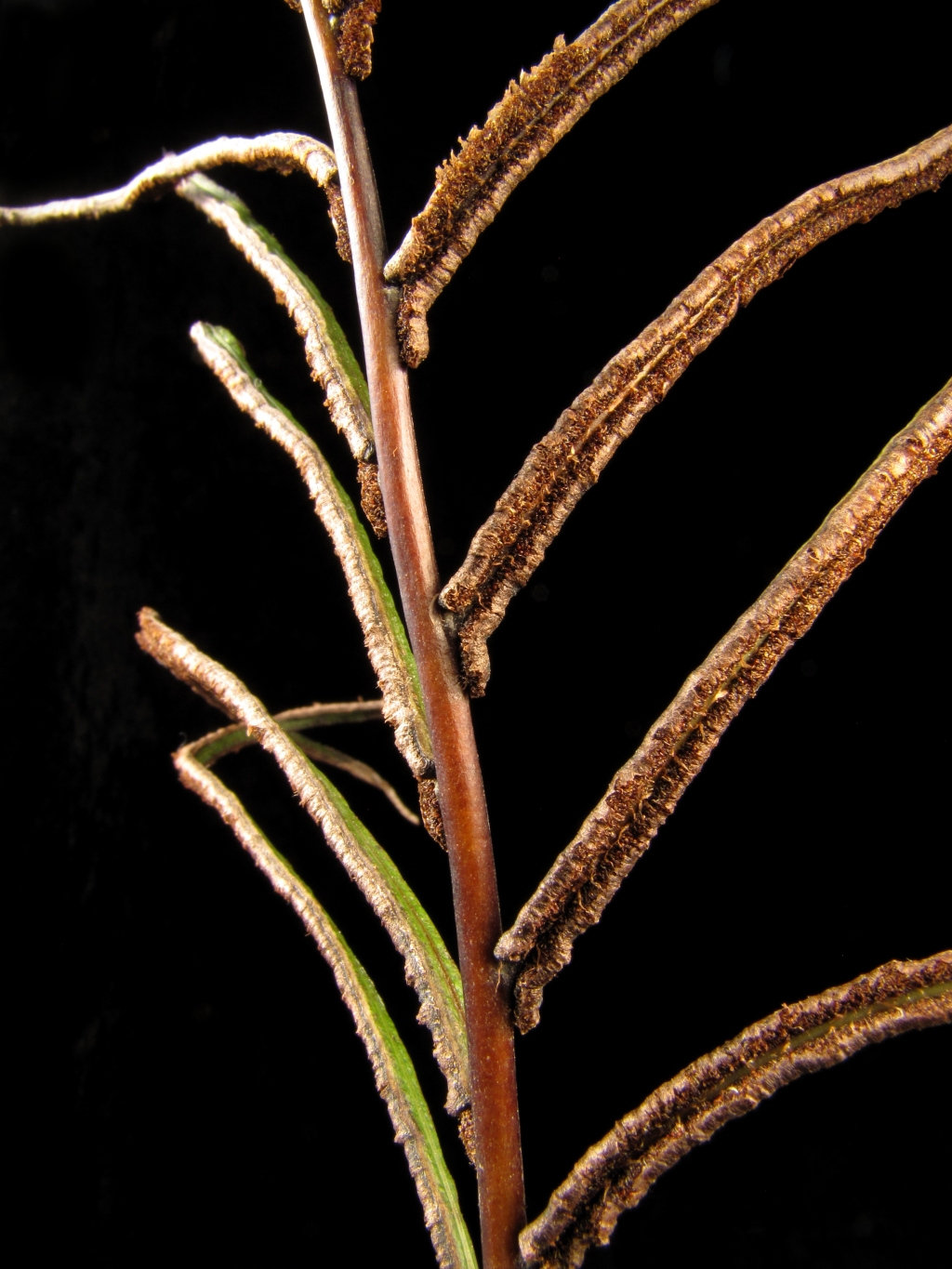Blechnaceae
Usually terrestrial ferns. Rhizome usually stout and erect, sometimes creeping, covered with scales. Fronds clustered at top of rhizome; stipe not articulated to rhizome, grooved, base covered in scales. Lamina usually pinnately lobed or once pinnate, fertile fronds sometimes distinctly different (usually narrower) than sterile ones; lateral veins free, parallel, or forming areoles near midvein. Sori long, continuous on both sides of midvein or short, forming interrupted rows parallel to midvein; indusia (present in Victorian genera) attached along soral vein, opening towards midvein; spores bilateral. Gametophyte cordate.
6 genera, in tropics and cool-temperate regions, cosmopolitan; 3 genera in Australia, 1 in Victoria.
A second genus, Doodia, was previously recognised in the Victorian flora. Phylogenetic analyses of DNA sequence data showed that Doodia was closer related to some Blechnum lineages than all the Blechnum lineages were to each other (Perrie et al. 2014) and consequently to recognise Blechnum as a genus that encompasses a single lineage exclusive of all other genera, Doodia is here included within Blechnum. Alternative classifications (Gasper et al. 2016) recognise several genera which each represent a lineage within the broad concept of Blechnum adopted here, however these genera are morphologically ill-defined.
Entwisle, T.J. (1994). Ferns and allied plants (Psilophyta, Lycopodiophyta, Polypodiophyta). In: Walsh, N.G.; Entwisle, T.J., Flora of Victoria Vol. 2, Ferns and Allied Plants, Conifers and Monocotyledons, pp. 13–111. Inkata Press, Melbourne.
 Spinning
Spinning


